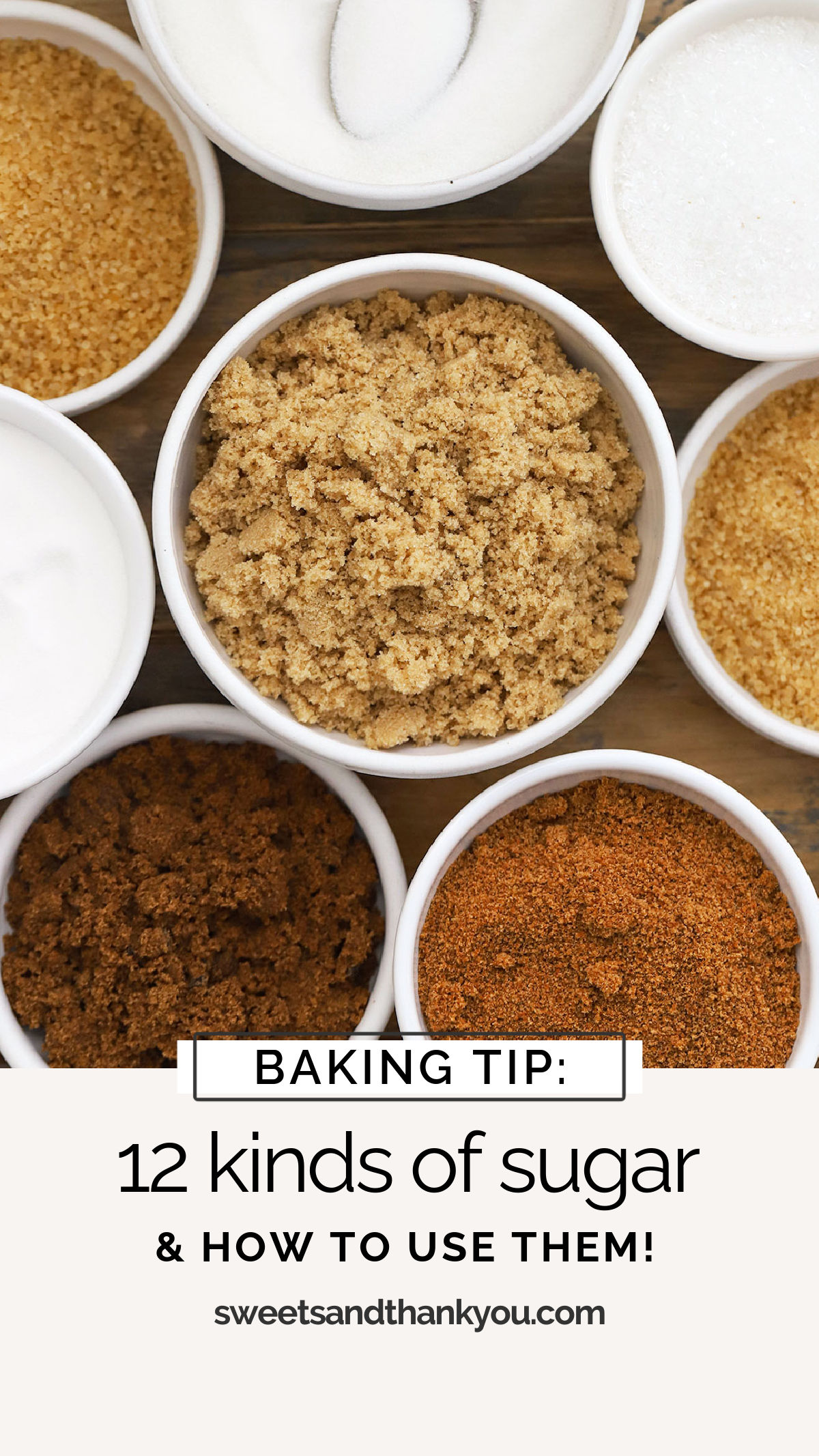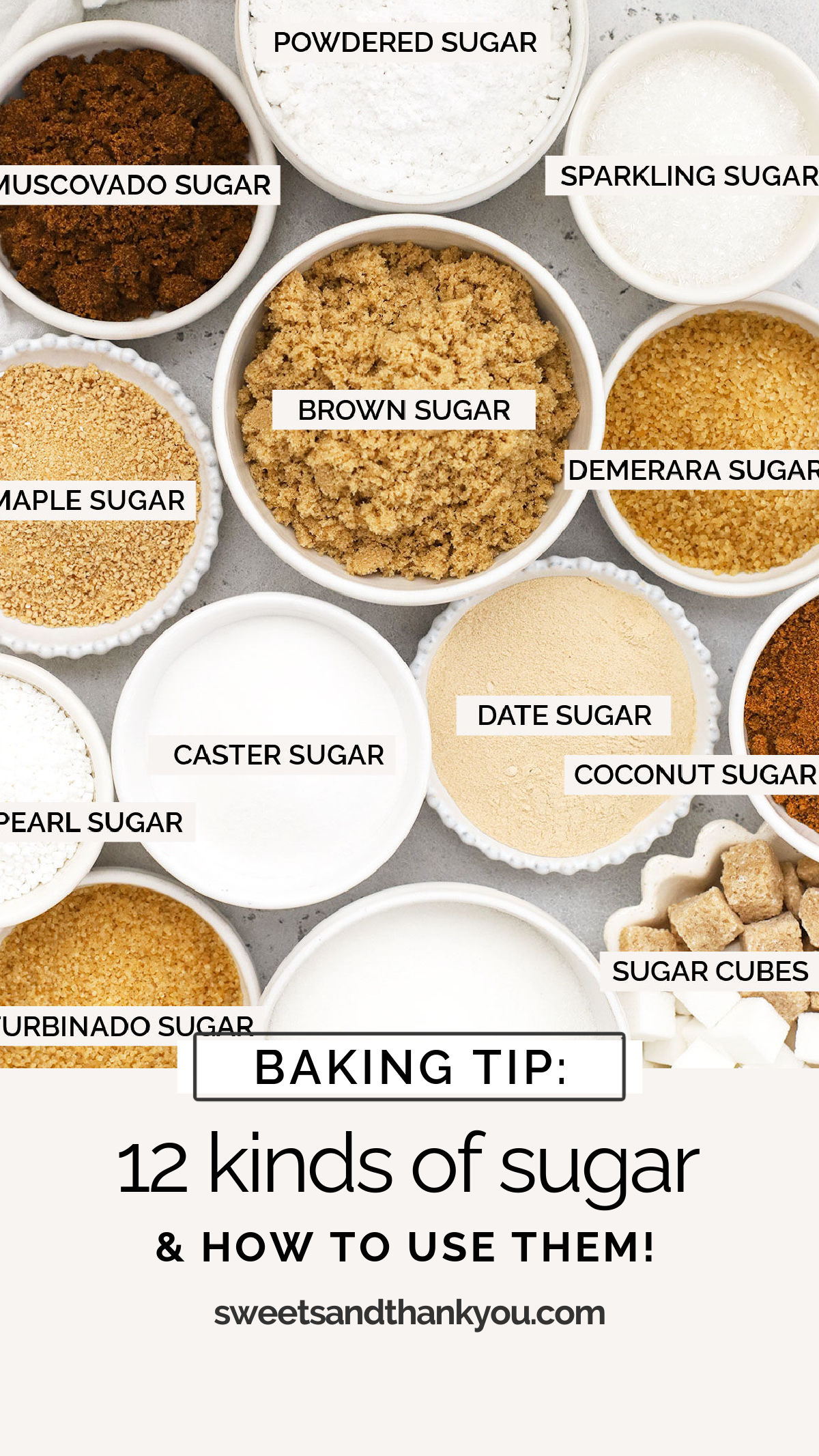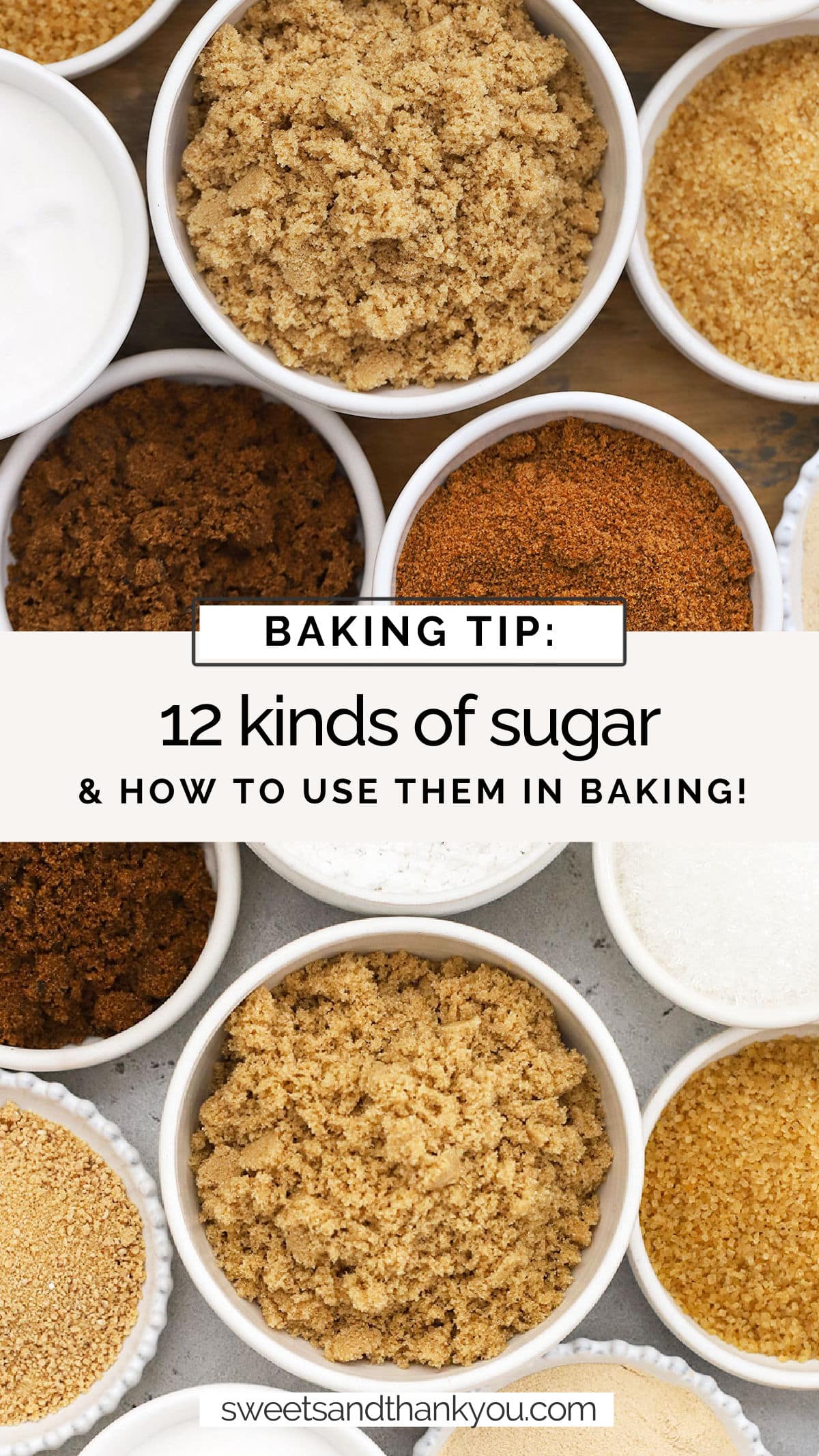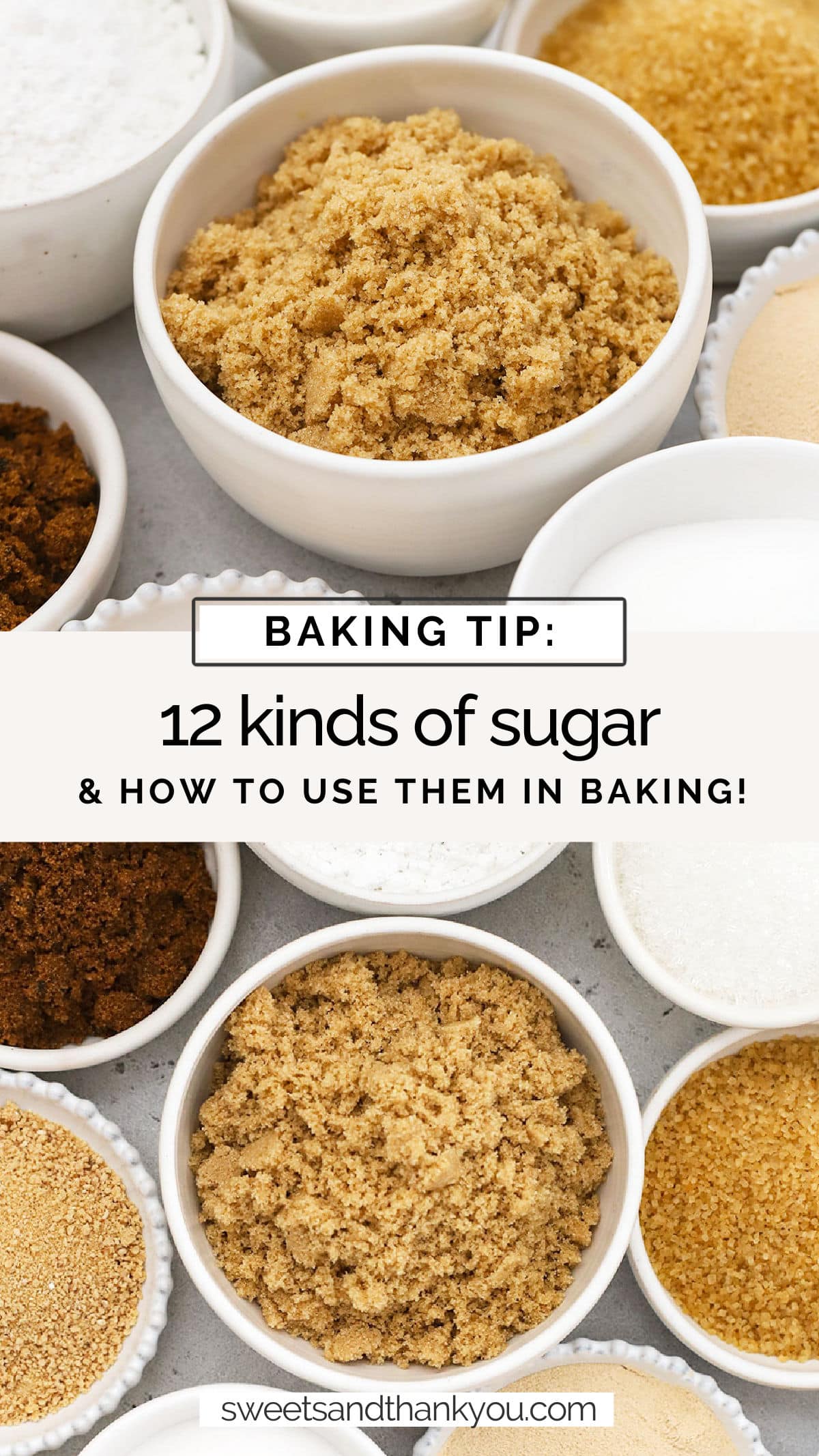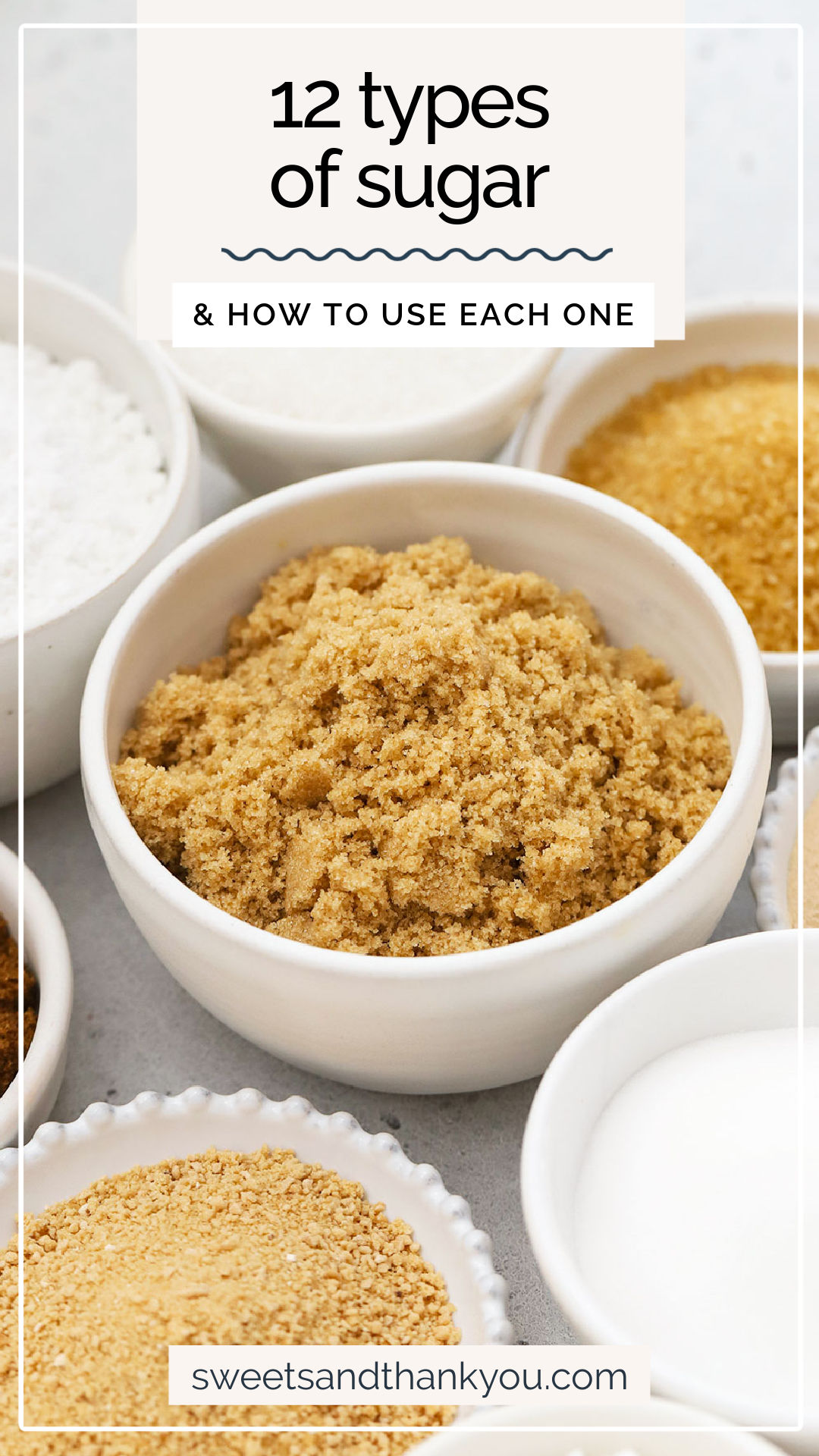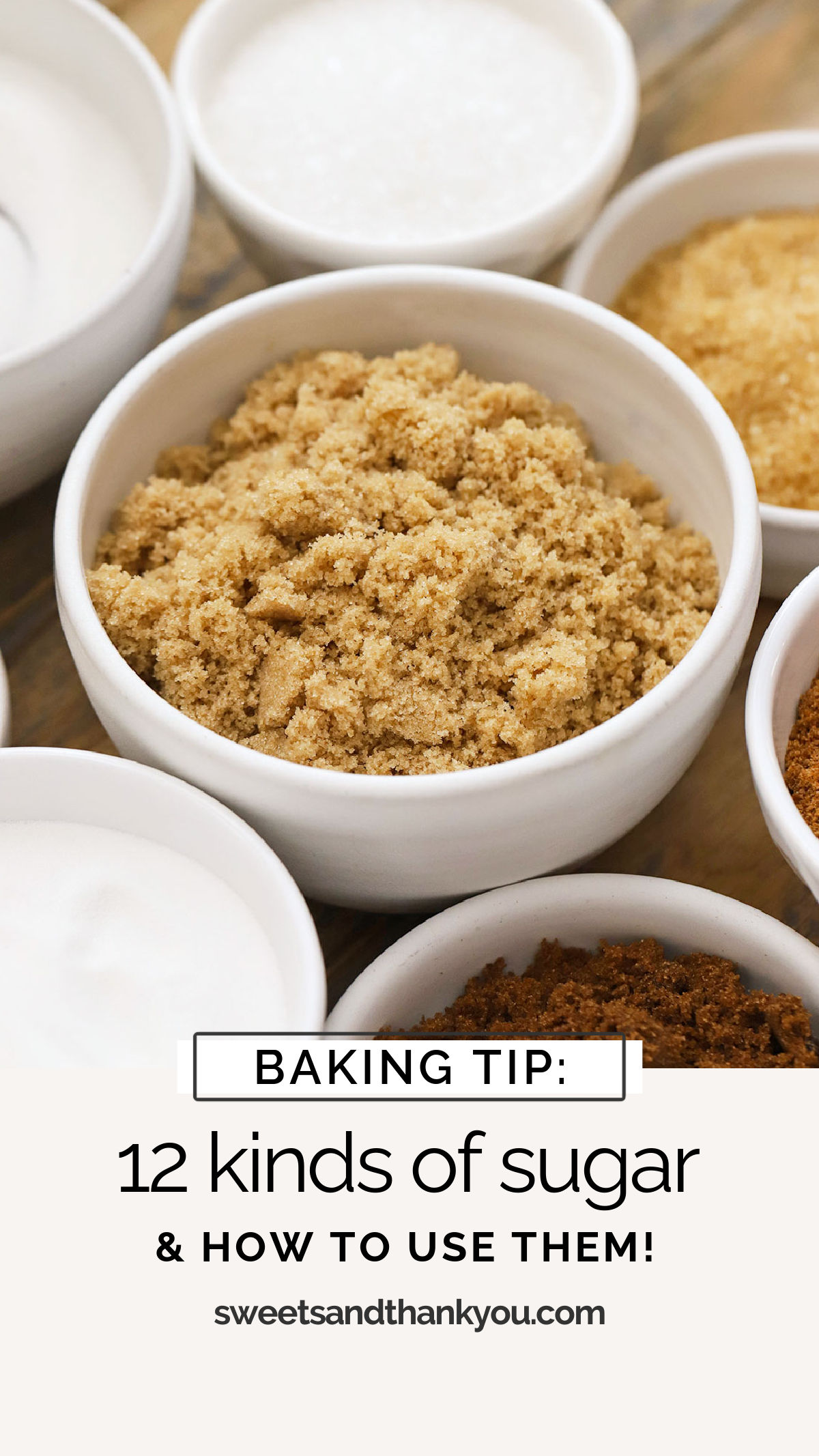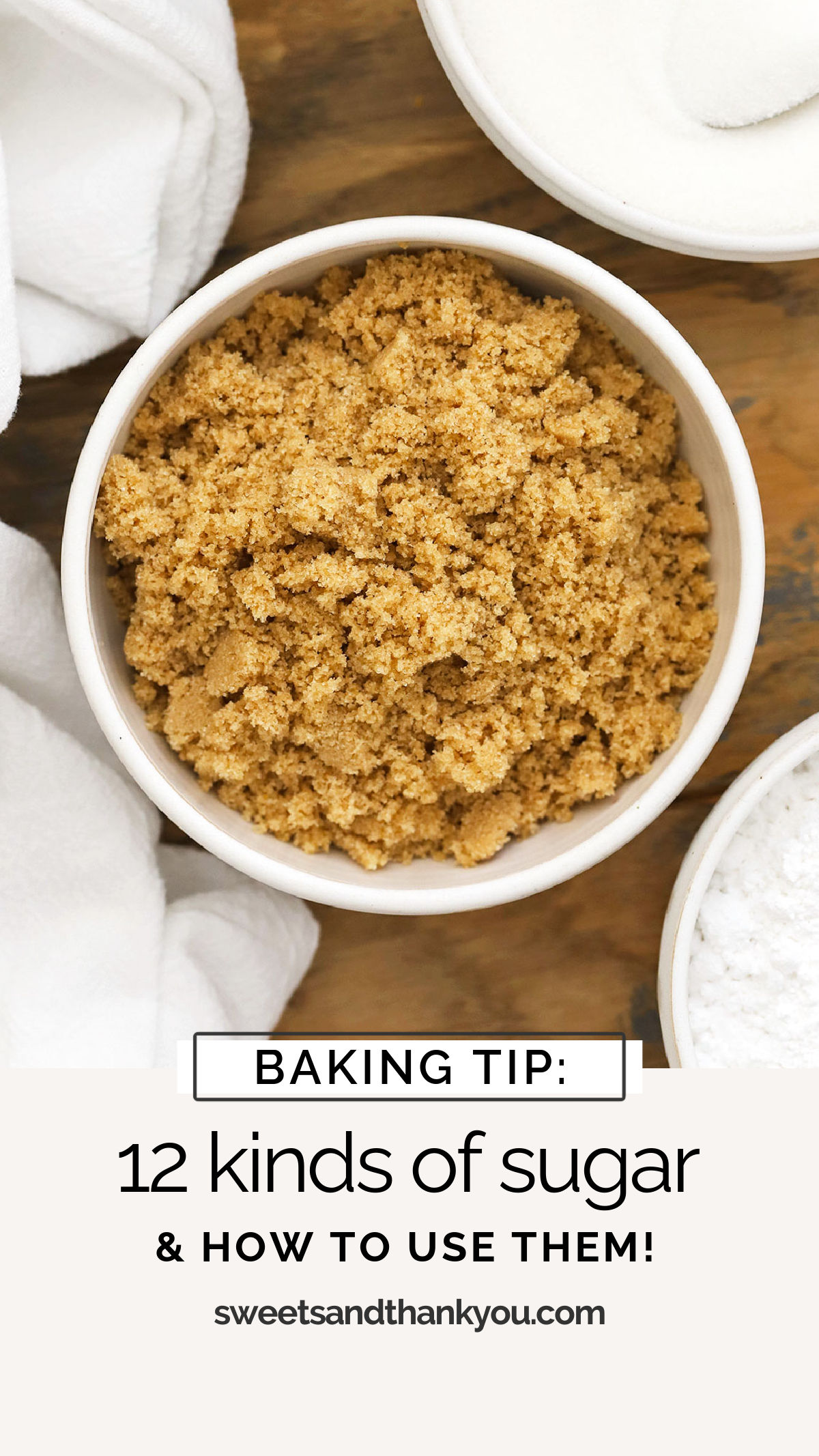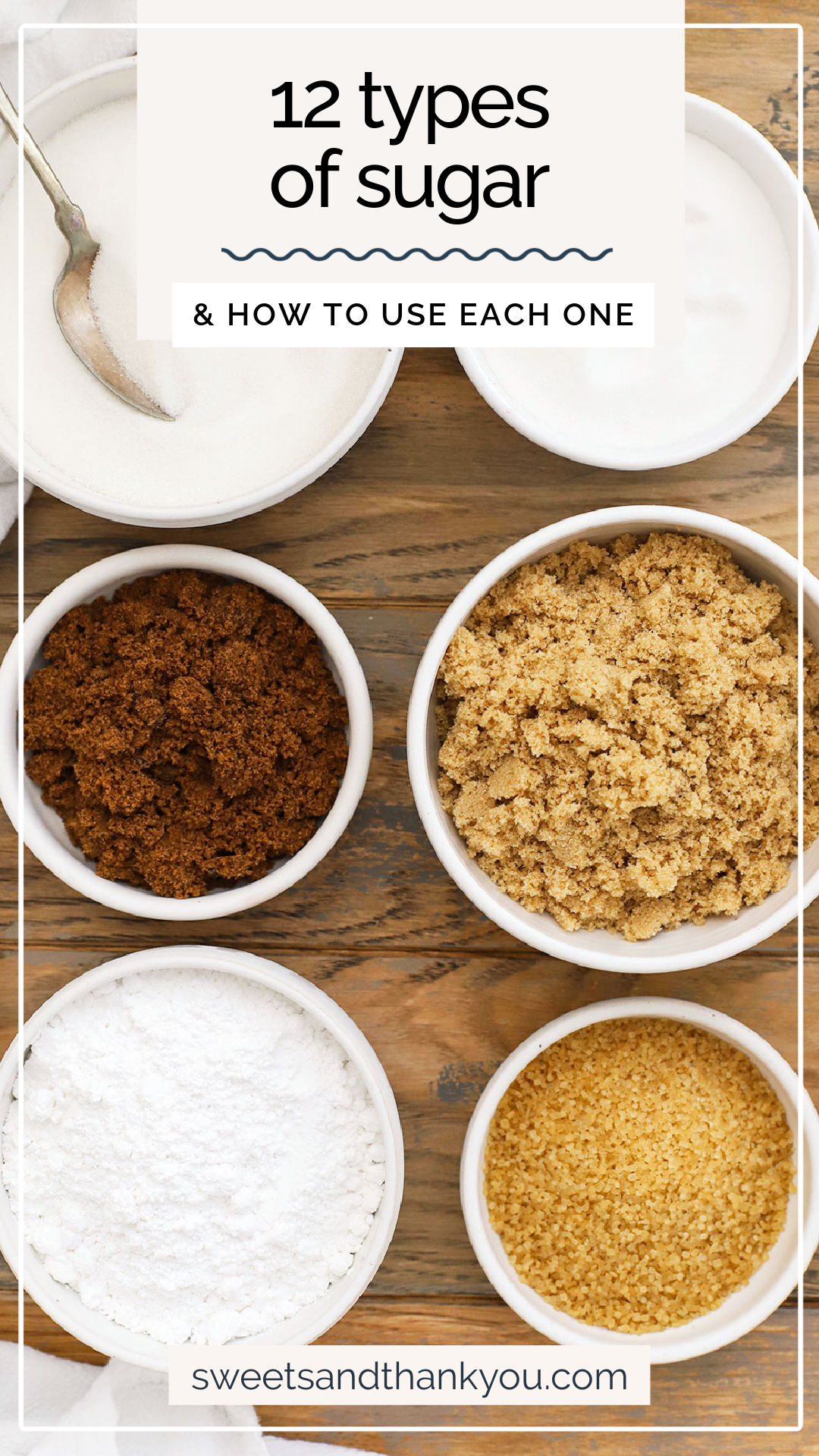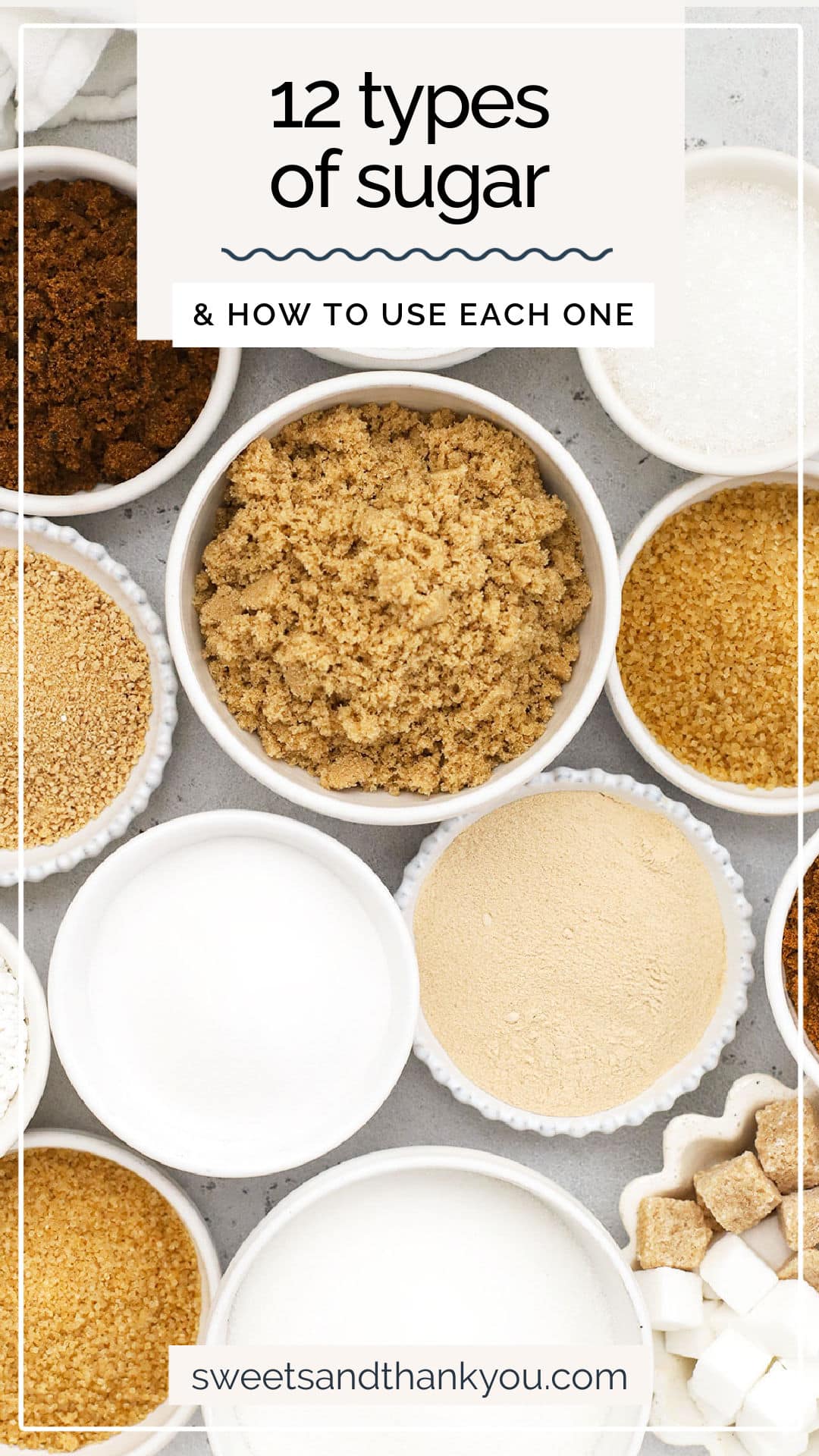12 Types Of Sugar & How To Use Them
This post may contain affiliate links. See our disclosure policy for more.
12 Kinds Of Sugar & How To Use Them – We’re breaking down common kinds of sugar & how to use them in cooking and baking.
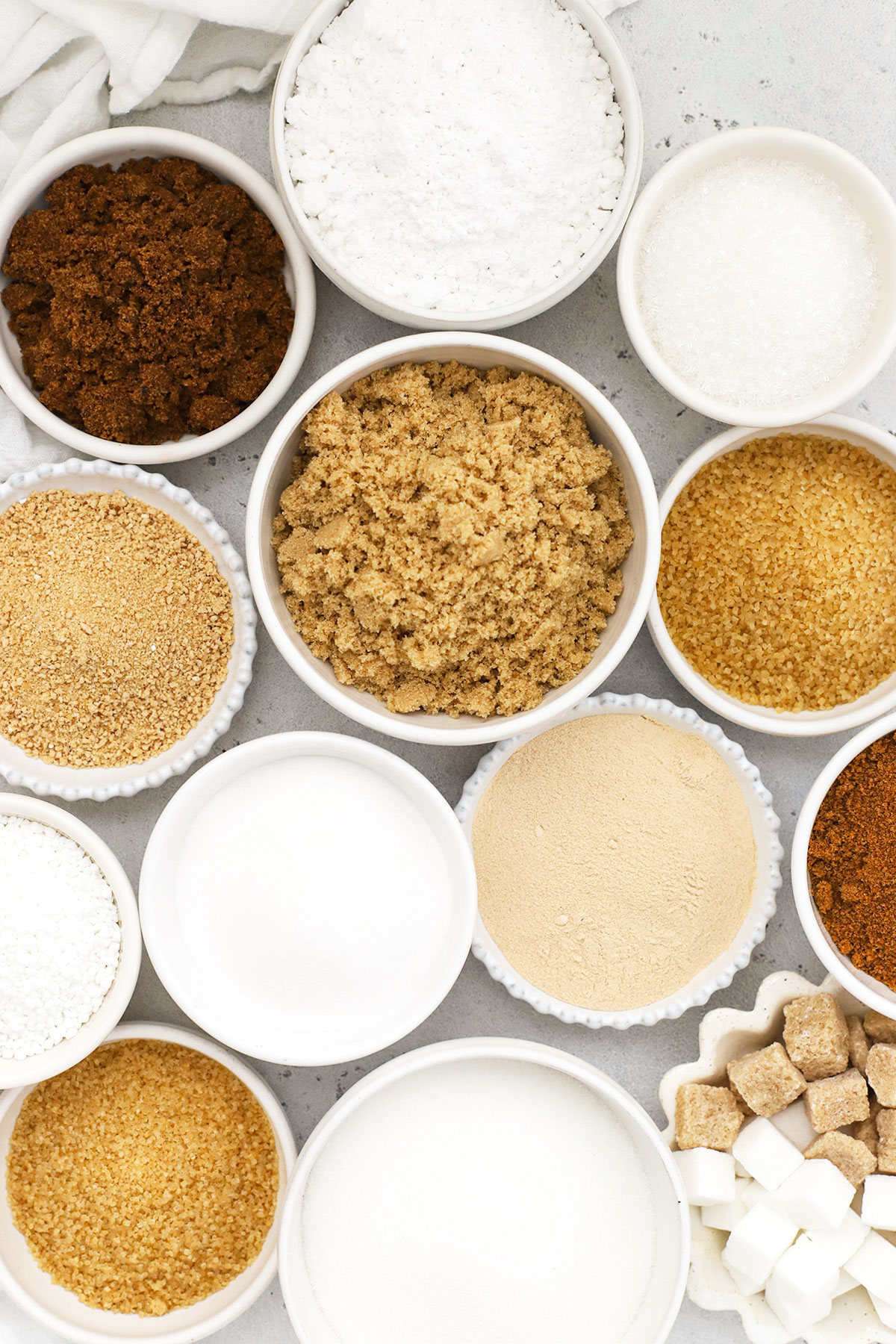
There’s some kind of sweetener in almost everything we make here at Sweets & Thank You! Whether we’re mixing up cookie dough, whipping up fluffy frosting, garnishing a sweet treat, or sweetening a mocktail, we’re using sugar!
There are all kinds of feelings out there about this baking ingredient when it comes to sugar intake or which sweeteners are best, but today, we’re focusing on basic information. If you’ve ever wondered what the different kinds of sugar are or how they’re used, this is the post for you!
We’ll break down the different names that sugar goes by, share common swaps and sugar substitutions, and give you tips for measuring, storing, and using sugar in all kinds of different ways. Ready to dive in?
Here are the different types of sugar for cooking and baking and how to use them…
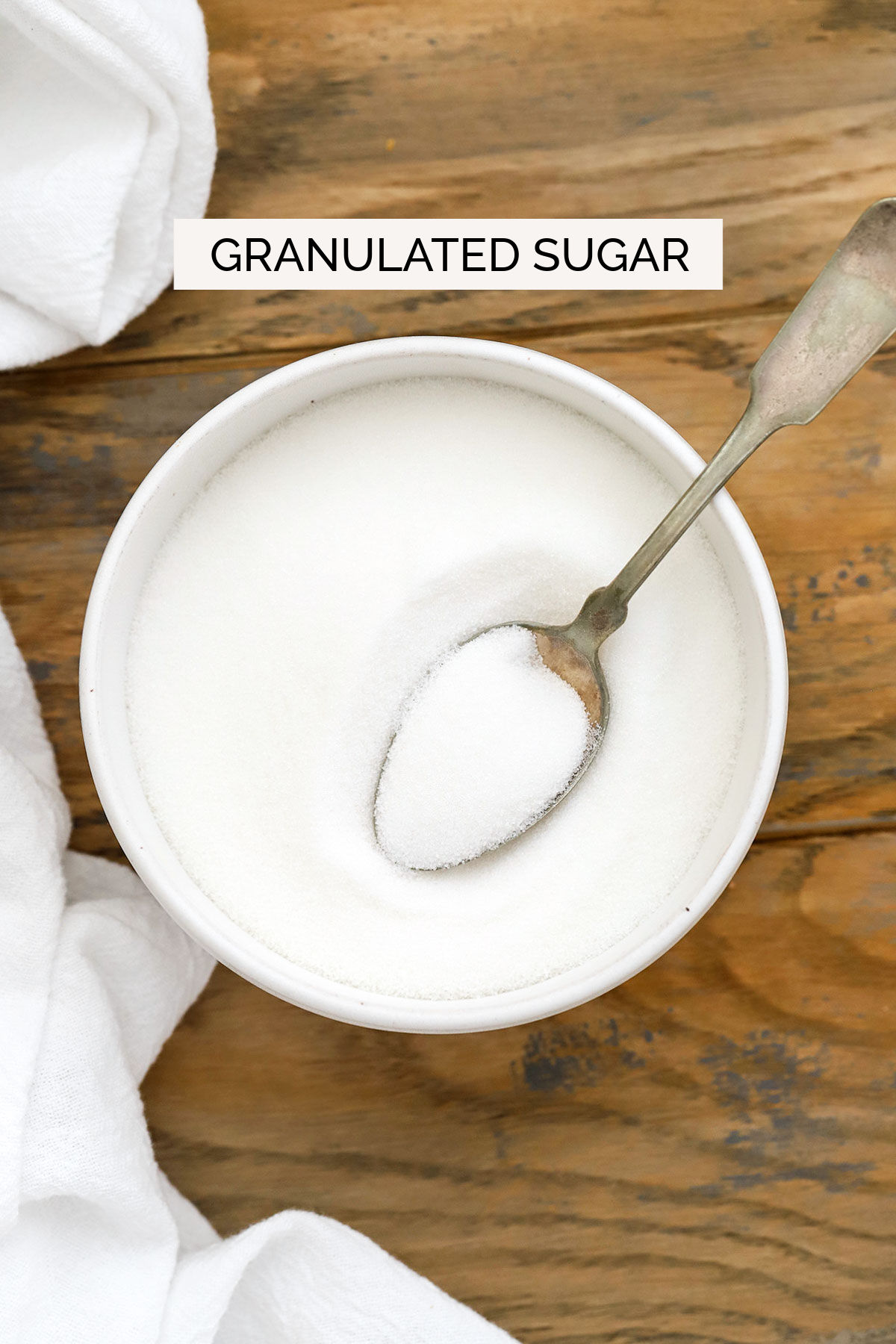
Granulated Sugar
Granulated sugar (sometimes called white sugar or table sugar) is what most people refer to when they say “sugar.” If you see “sugar” on a nutrition facts label, food label, recipe, or ingredients list, granulated sugar is what they’re referring to.
Granulated sugar is white sugar made from either sugar cane or sugar beets (or a mixture). Refining granulated sugar produces molasses, which is removed from white sugar to help it get that white appearance. Sugar is also sometimes bleached for an even whiter appearance.
While buying sugar at the grocery store, you may see some sugar labeled “cane sugar” or “natural cane sugar.” This is also refined white sugar, though it’s is made solely from sugarcane and has a more blonde/less white appearance than the slightly more refined white sugar. Either can be used for most recipes that call for sugar, white sugar, or granulated sugar. (See more about their similarities and differences here.)
As for uses, granulated sugar dissolves well, which makes it great for making simple syrup for mocktails, cocktails, and drinks, or for creaming, melting, or mixing into baked goods.
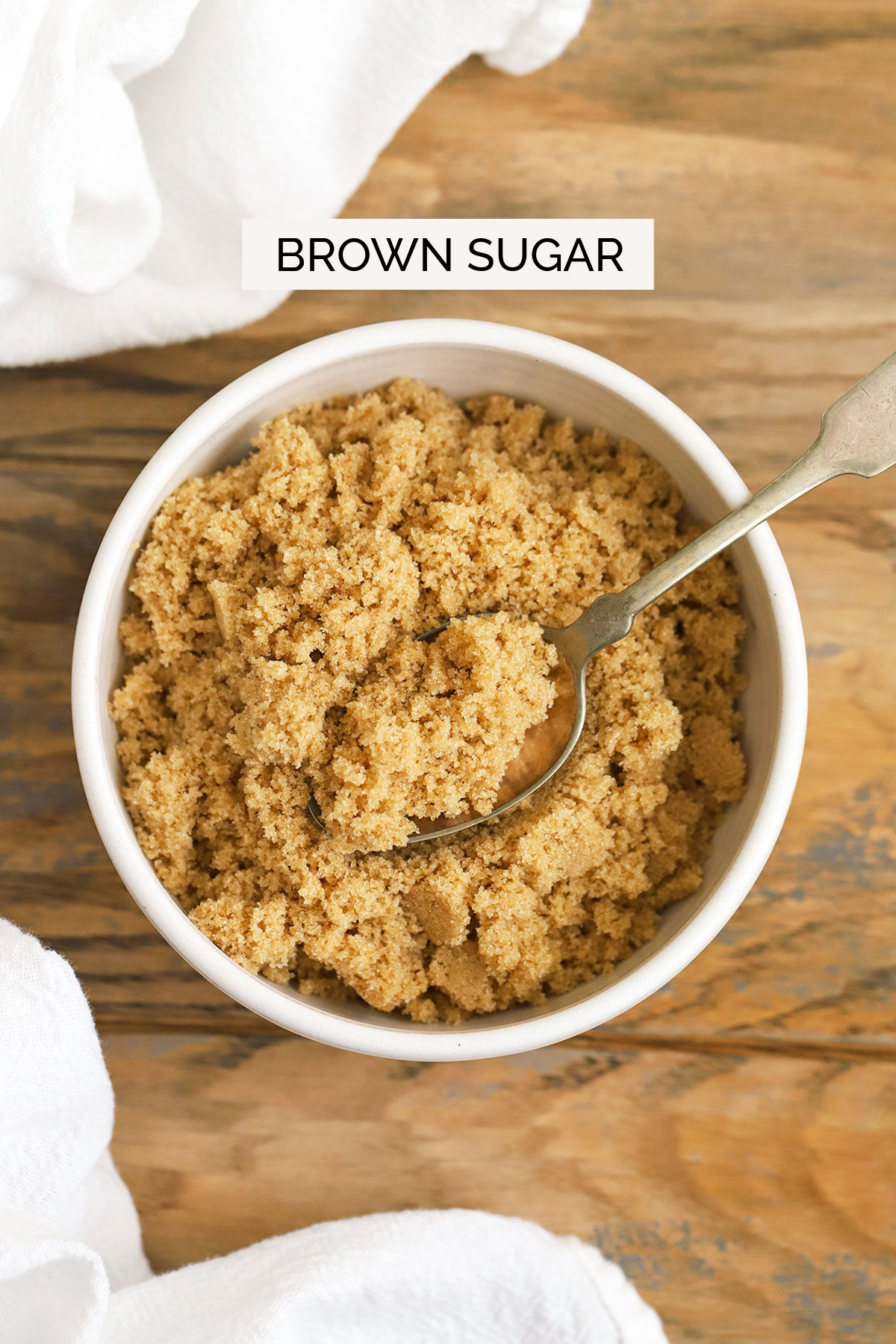
Brown Sugar
Brown sugar is made from granulated sugar and molasses. The molasses gives brown sugar its signature color and the amount of molasses determines whether it’s light brown sugar or dark brown sugar. Light brown sugar contains less molasses than dark brown sugar.
Brown sugar is more moist than granulated sugar because of the molasses content, so it’s commonly added to give additional chewiness and moisture to baked goods like cookies, brownies, and muffins. The flavor is more intense, rich, and nuanced that white sugar as well, so brown sugar can add notes of toffee, caramel, or molasses to recipes.
I LOVE what the molasses does to the color and flavor of brown sugar, but it also makes brown sugar a bit more finicky to work with. It’s important to pack brown sugar down into the measuring cup to get an accurate measurement (or weigh it for even better results!). It can also dry out and harden faster than white sugar, so you can try these tips to soften brown sugar if yours has gotten hard!
GOOD TO KNOW: You can make your own brown sugar substitute at home with molasses and granulated sugar. Such a lifesaver if you’re out of brown sugar!
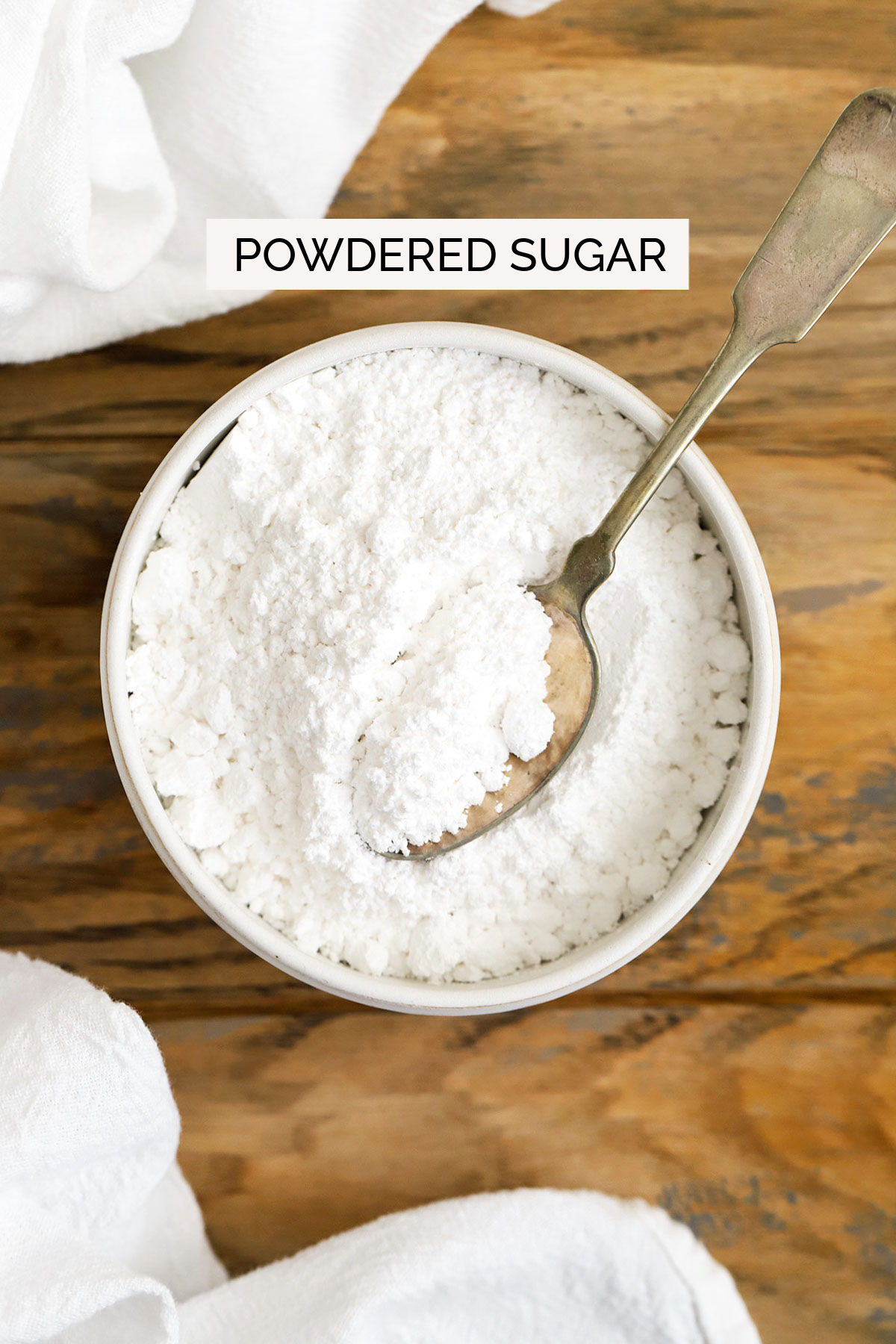
Powdered Sugar
Powdered sugar is sometimes labeled confectioner’s sugar or icing sugar. It’s made from finely ground and sifted granulated sugar, usually mixed with cornstarch or arrowroot to help avoid clumping.
Confectioner’s sugar dissolves quickly and easily, making it the most common sugar for glaze and frosting recipes. Because of its fine texture, it can also help produce a glossy sheen when added to baked goods, like brownies.
Another common way to use powdered sugar is as a garnish–dusted, shaken, or misted over baked goods like cakes, tarts, pancakes, brownies, etc. to give them a final flourish. It can also be used to coat cookies, donuts, and truffles.
GOOD TO KNOW: If you’re out of powdered sugar at home, you can actually make your own in a high speed blender! Do know that the high speed mixed with the grains of sugar can sometimes scuff or scratch the blender pitcher. This is cosmetic only and shouldn’t impact the function of your blender, but it is worth mentioning!
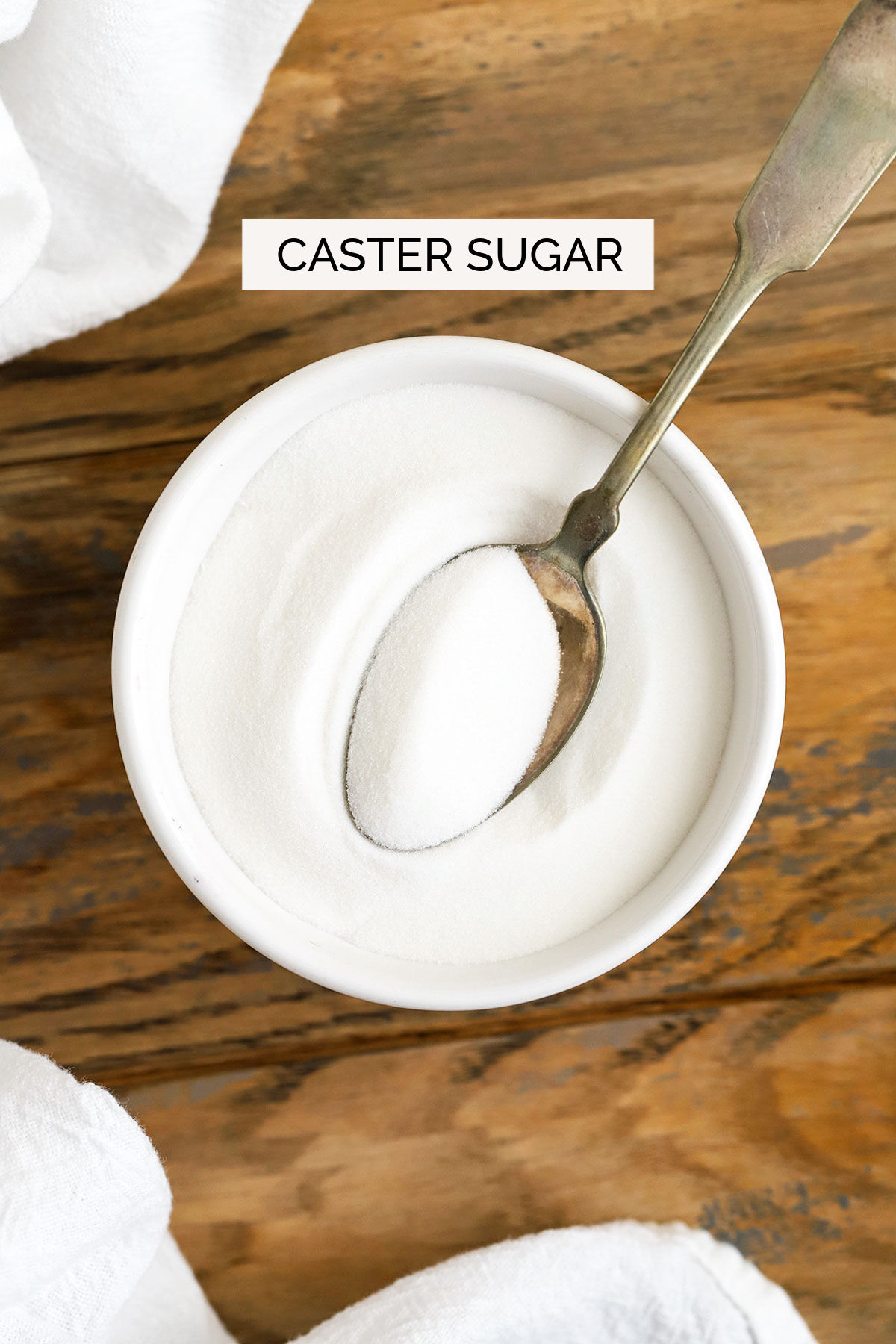
Caster Sugar (Superfine Sugar)
Caster sugar is also known as superfine sugar or baker’s sugar. It’s more popular in the U.K. than it is in the United States, but it can work well for dissolving into drinks, mixing into meringue, making simple syrup and more.
Because it has a very fine, small grain texture, caster sugar is typically used when dissolving the sugar quickly or completely is important to a recipe.
GOOD TO KNOW: If you can’t find caster sugar/superfine sugar or don’t have it on hand, you can pulse regular granulated sugar a few times in a blender or food processor to break down the grains a bit more. It won’t be precisely the same, but it’s a workable substitute in most cases!
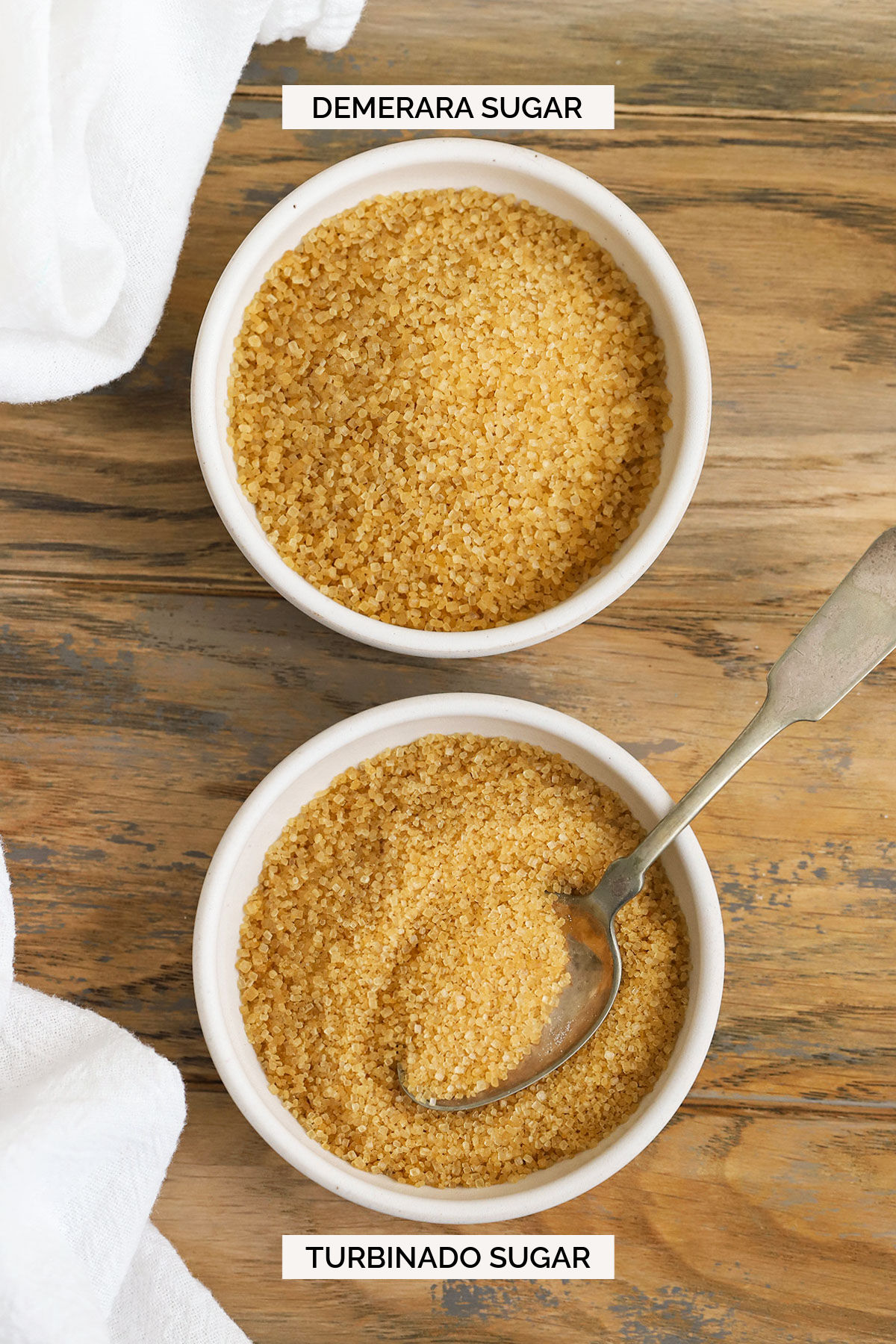
Turbinado Sugar
Sometimes labeled “raw sugar,” “raw cake sugar,” or “sugar in the raw”, turbinado sugar is known for being less refined than granulated sugar. It has larger sugar crystals than regular sugar, with a soft golden color and subtle caramel flavor that make it a pretty topping for muffins and scones.
GOOD TO KNOW: If you need turbinado sugar as a garnish, but you don’t have any on hand, the next best substitute for turbinado sugar is demerara sugar, which also has a coarse texture. Or, you can use sparkling sugar.
Demerara Sugar
Americans might not recognize this one right away! This sugar isn’t commonly used in the United States, but it’s worth knowing about if you love to bake. Demerara sugar has slightly larger, more distinct grains than turbinado sugar. It offers a crunchy texture, and toffee flavor notes, which makes it popular for stirring into coffee or tea, or finishing cookies, scones, and muffins.
GOOD TO KNOW: Turbinado sugar is a good substitute for demerara sugar in most cases. The larger grains can give the same crackly crunch and sparkle to baked goods, and it has a similar flavor for drinks.
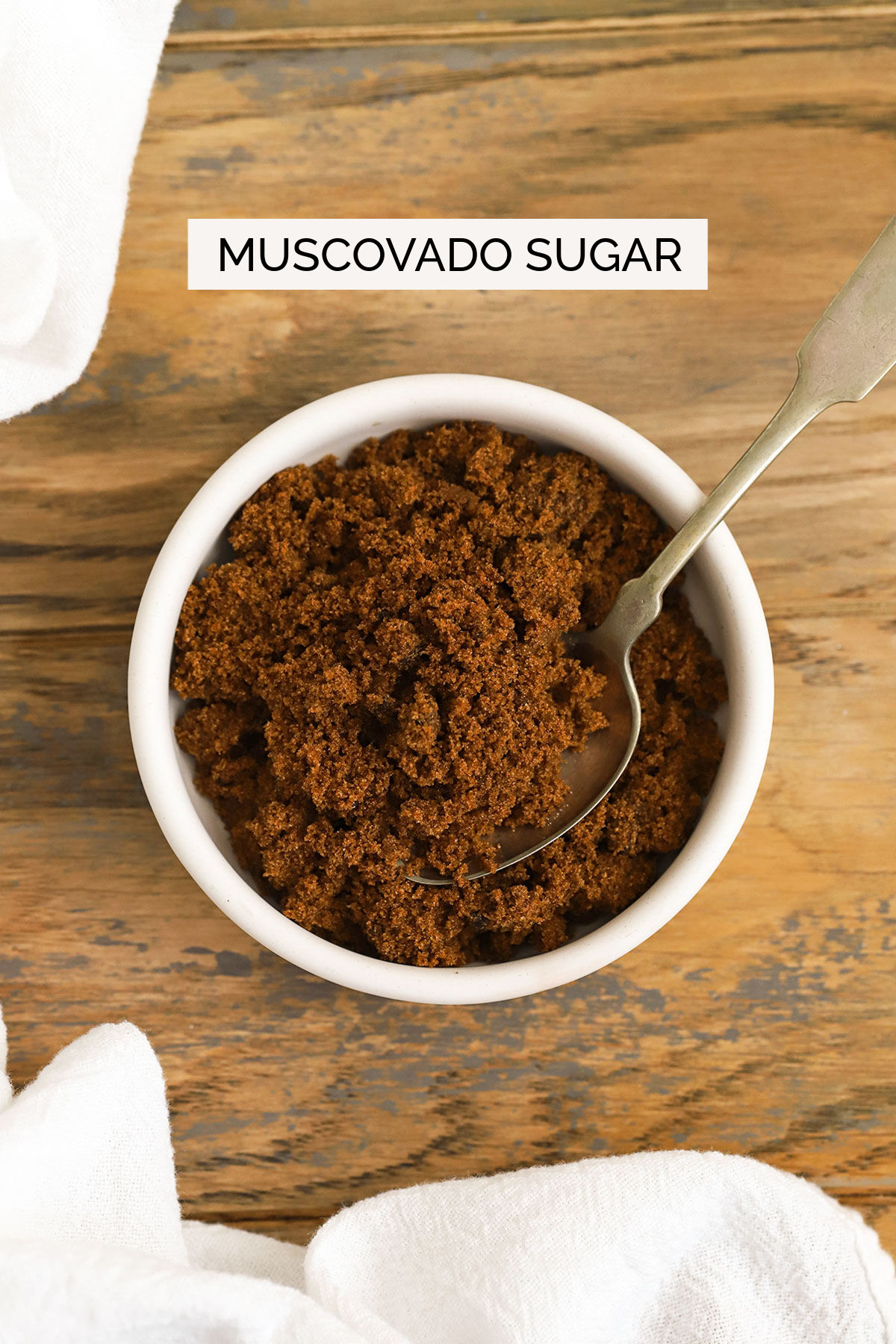
Muscovado Sugar
Muscovado sugar (sometimes called Barbados sugar or molasses sugar) is unrefined cane sugar with high molasses content. There are two varieties/intensities: light muscovado sugar (lighter in color, less intense) and dark muscovado sugar (darker in color, more intense).
Since most of the molasses is intact, muscovado sugar is darker in color and more intense in flavor than either light brown or dark brown sugar, and is typically reserved for recipes with strong, bold flavors, like gingerbread, barbecue sauce, or for making rum. It also contains more trace minerals, thanks to the molasses content. It really does taste like molasses!
Muscovado sugar has a much stronger flavor than dark brown sugar, so it’s best to only use it when called for. The best substitutes for muscovado sugar are typically unrefined sugars, like panela or sucanat.
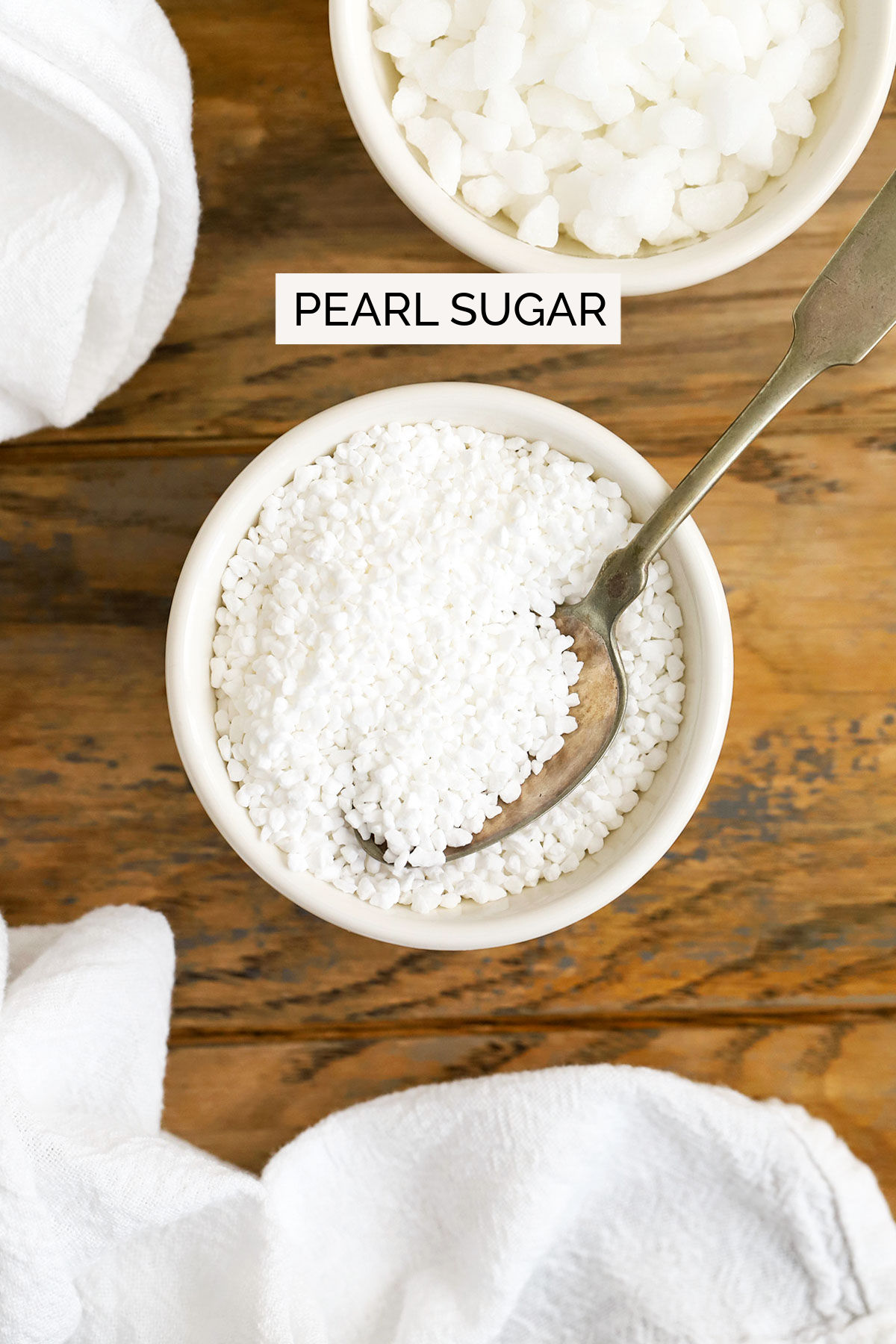
Pearl Sugar
There are two popular kinds of pearl sugar–Belgian pearl sugar, which is common in Belgian Liege waffles, and Swedish pearl sugar, which is used to garnish cinnamon buns (like this). Belgian pearl sugar is large and very crunchy. (It’s in the top right bowl of the photo above). Swedish pearl sugar is smaller than Belgian pearl sugar, but is still quite large compared to granulated sugar or sprinkles. (Swedish pearl sugar is in the bowl in the center of the photo above.)
Pearl sugar is gorgeous, and typically only used as an accent rather than as the primary sweetener in a recipe.
GOOD TO KNOW: If you can’t find it near you, you can make your own pearl sugar by smashing sugar cubes. (A meat tenderizer works well!)
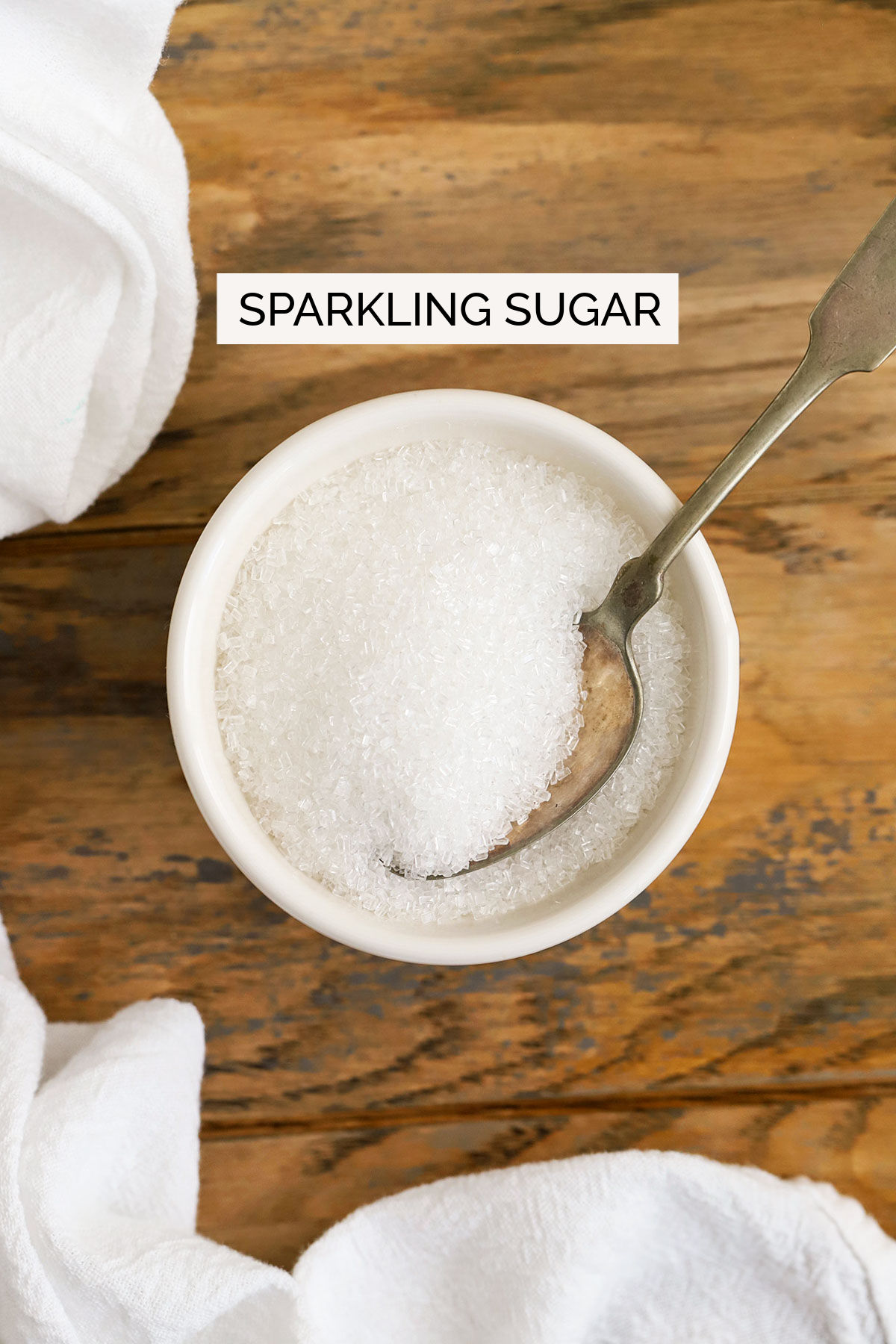
Sparkling Sugar
Sparkling sugar and sanding sugar are purely decorative. These sugars are usually used to decorate cookies and cakes.
Sparkling sugar has a coarse, texture and bleached, bright sparkly white color. It can be dyed for decoration, but is typically used for a crunchy, sparkly finish to cookies, gingerbread houses, and other baked goods. (PS – Want to know more about sprinkles? Check out our Sprinkles 101 post!)
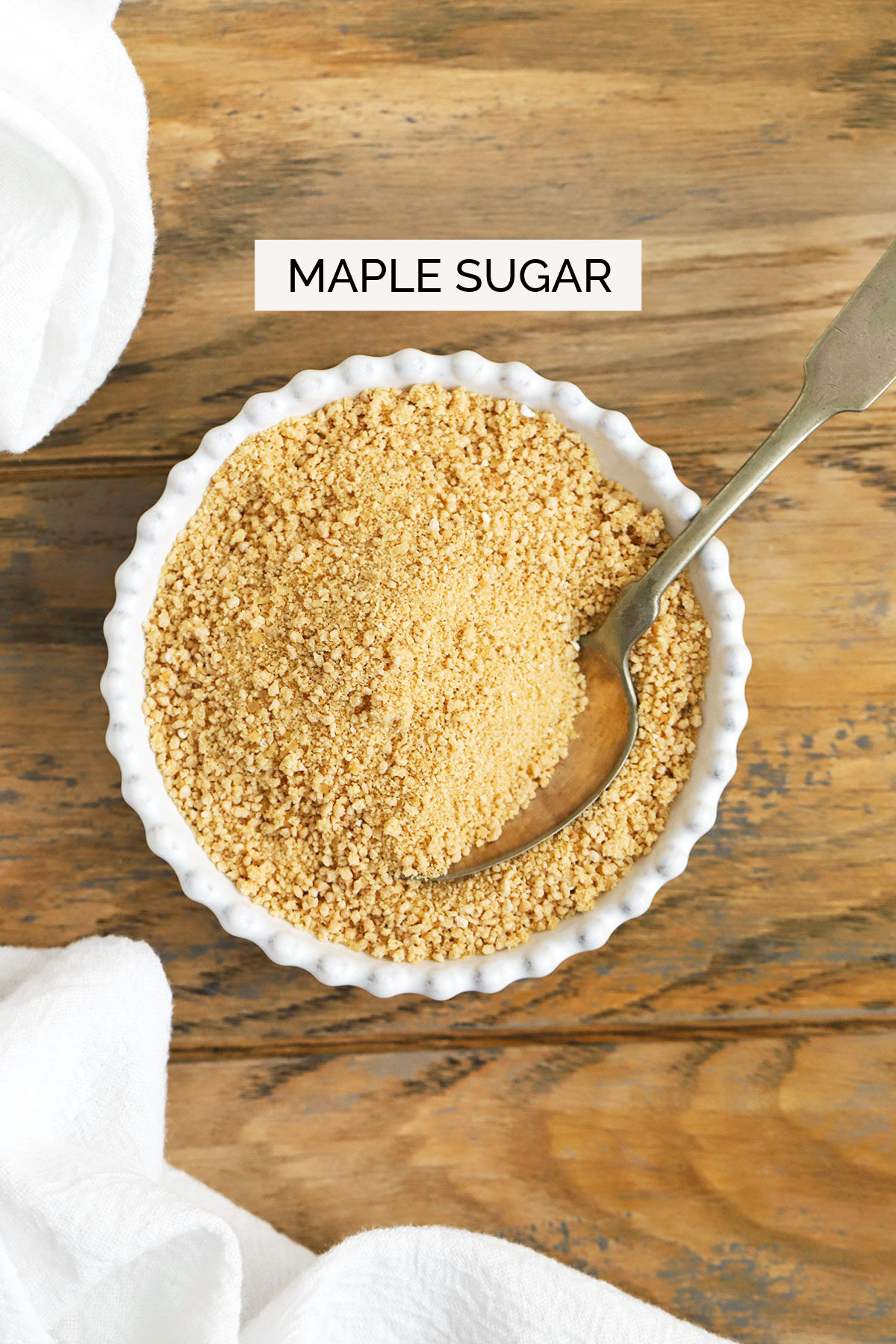
Maple Sugar
Just like the name suggests, maple sugar is made from maple syrup! It’s crystallized pure maple syrup, so it has an intense maple flavor that adds deep caramel-like notes. It’s most commonly used by bakers avoiding processed sugars.
Maple sugar isn’t a great 1:1 substitute for most other sugars because of its intense maple flavor and tendency to brown/burn, though it can be great mixed in as part of a recipe, such as in a coffee cake crumb topping, or a spice cake. Unless you are a seasoned baker, it’s best to only use maple sugar when it’s called for in a recipe.
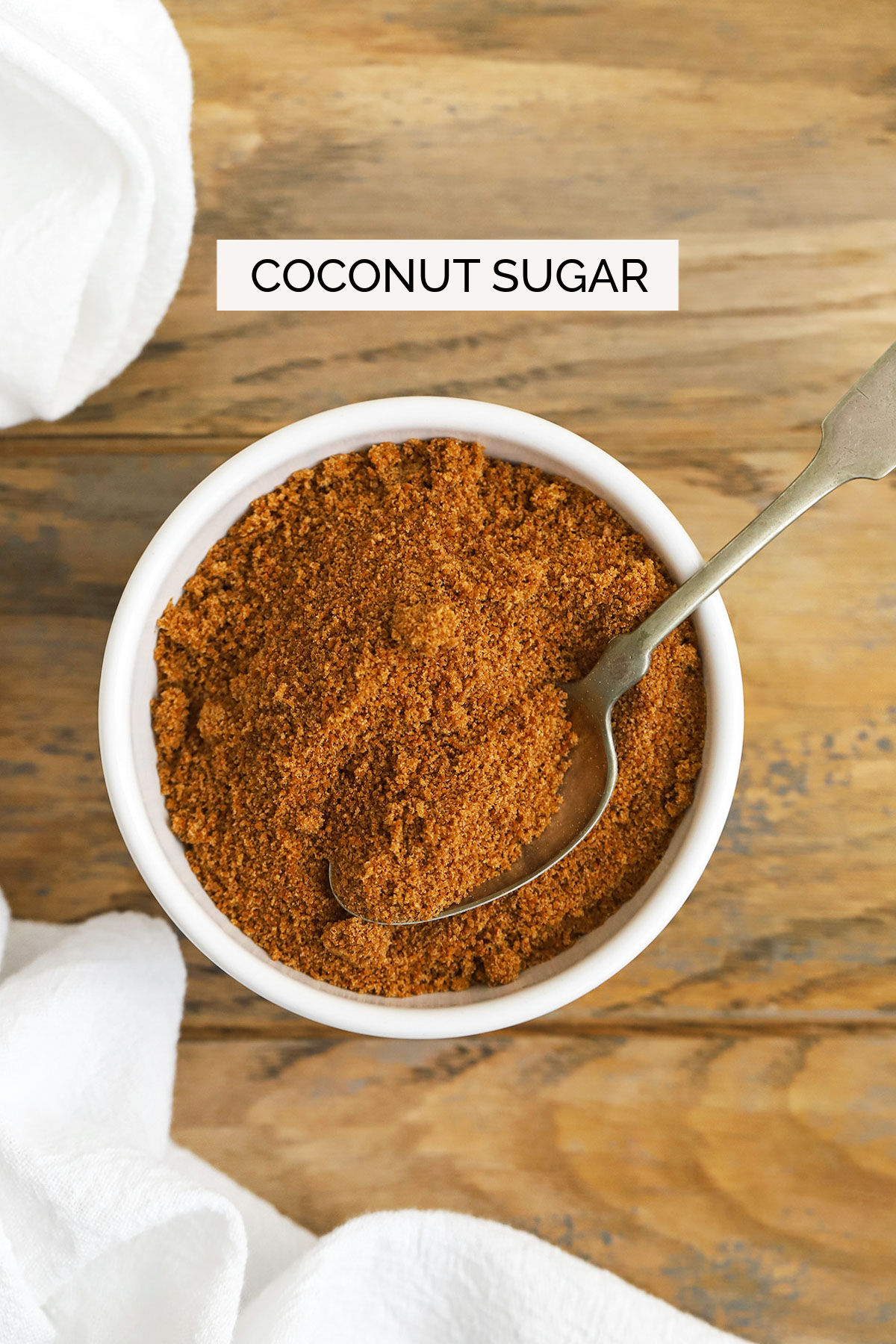
Coconut Sugar
Coconut sugar is made from crystallized coconut blossom nectar. It’s considered a lower glycemic/low glycemic sugar as it has a less dramatic effect on blood sugar. Coconut sugar is popular in the healthy baking, paleo, and vegan crowds as a more natural sweetener.
While it doesn’t taste strongly of coconuts, coconut sugar does have a distinct taste and deep brown color.
GOOD TO KNOW: Coconut sugar doesn’t crisp or brown the same way as granulated sugar and brown sugar do, and it adds a lot of moisture to a recipe. It’s much harder to get a glossy sheen on brownies, or a crisp golden muffin top when using coconut sugar, and it often impacts the color and spread of baked goods. Use it only when called for, for best results.
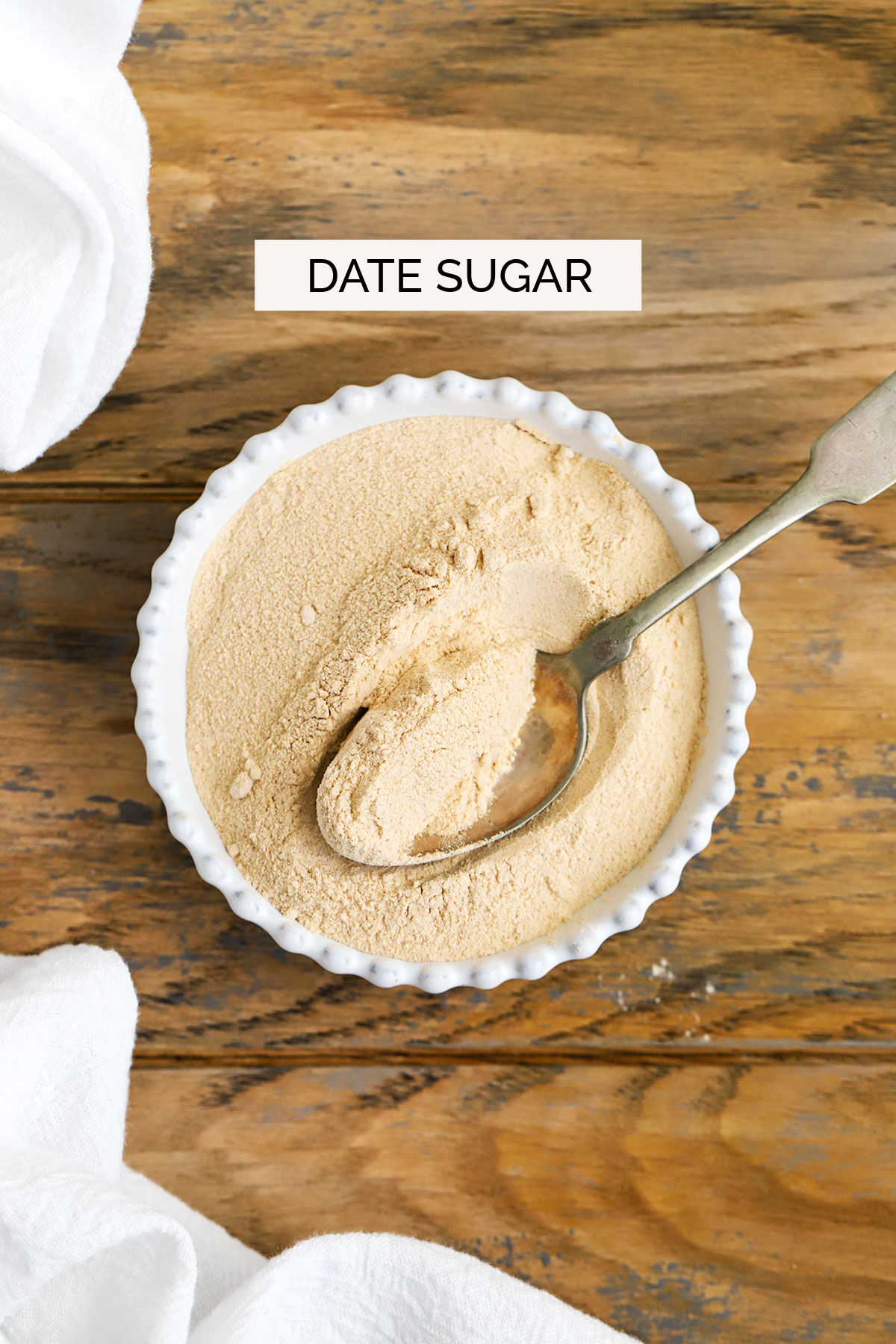
Date Sugar
Date sugar is a fruit sugar made from dehydrated, powdered dates. It’s a natural sweetener with a very subtle sweetness and typically used in healthier recipes or healthy desserts (like these vegan snickers rolls).
It has a tendency to harden into a big clump, so it can also be tricky to work with. Date sugar is not a 1:1 substitute for white or brown sugar, so it’s best to use it only when called for.
GOOD TO KNOW: Because of the fibrous content (dates have plenty of fiber!), date sugar will not melt. It can have a subtly gritty texture, so only use it when called for!
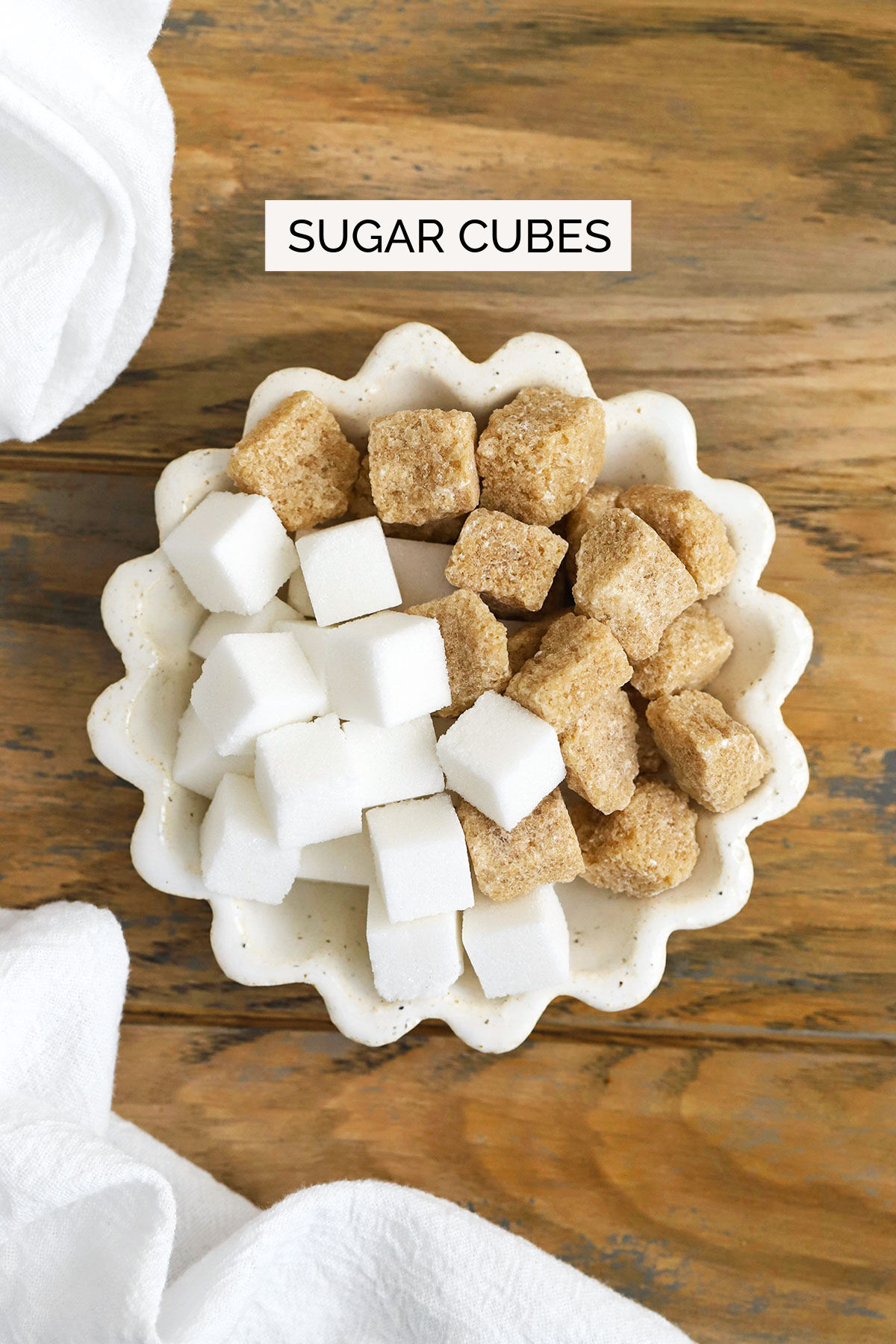
Bonus Type: Sugar Cubes!
Before we wrap up, I wanted to share one more type of sugar: sugar cubes! Sugar cubes can be made with several kinds of sugar (cane sugar & demerara sugar are common!).
Cubes of sugar are typically used to sweeten drinks like tea or coffee, or used for decoration, as with gingerbread houses. Some brands use edible “food glue” to hold their cubes together, while others use sugar syrup and compression.
Demerara sugar cubes are typically less refined and more organically shaped, while classic white sugar cubes are made from cane sugar or granulated sugar.
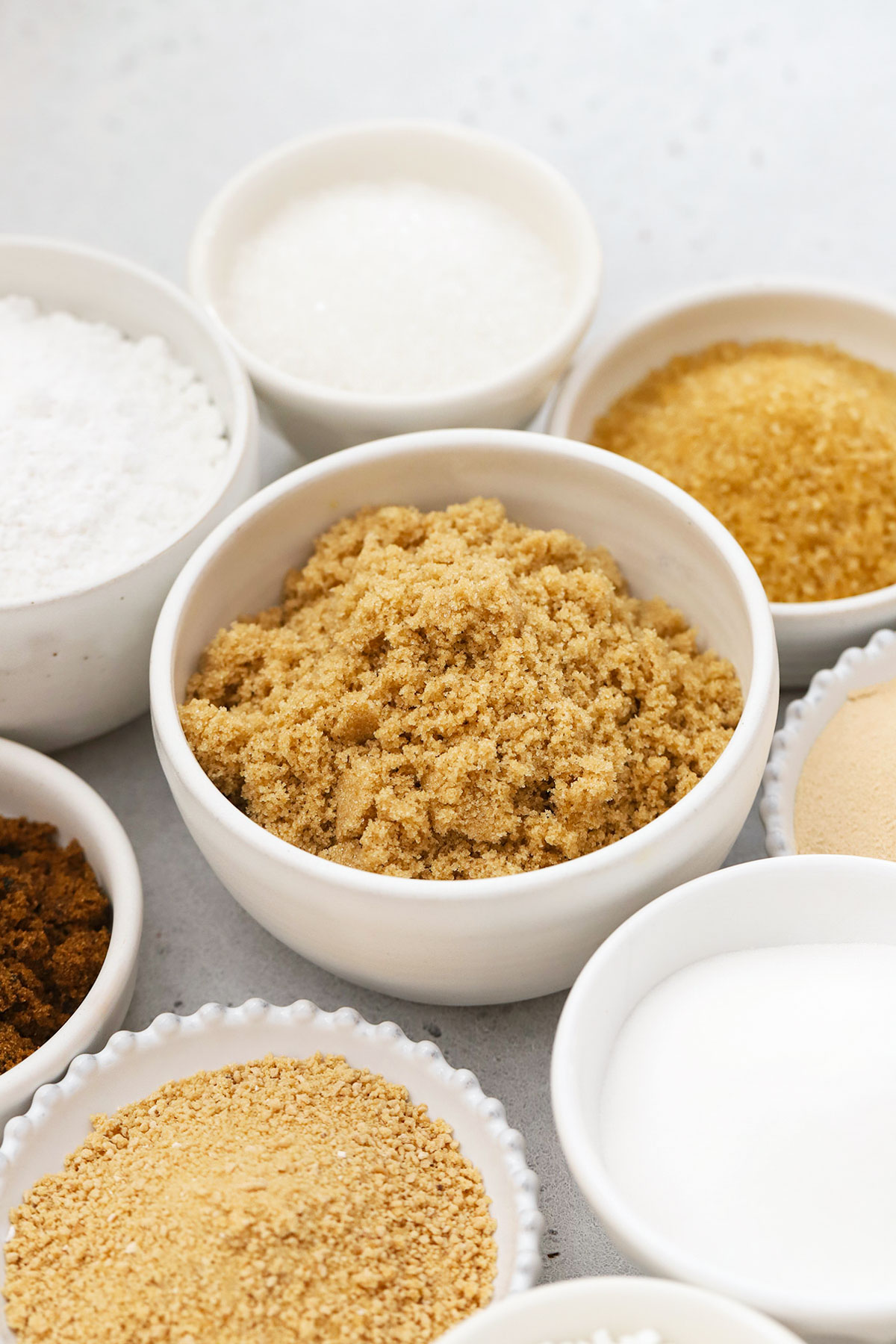
FAQ + Tips And Tricks For Working With Sugar
How To Measure Sugar. The most accurate way to measure sugar will always be to use a kitchen scale. They can be inexpensive and will give you the most accurate result when measuring. Otherwise, use the scoop and level method for granulated sugar and pack down brown sugar and sugars with molasses. (Brown sugar/sugar with molasses needs to be packed down because it’s more moist and takes up more space)
Is Sugar Gluten-Free? Yes!
How To Store Sugar. In general, you want to eliminate air exposure as much as possible, since the air will dry and dehydrate your sugar over time. Store in an airtight container or a zip-top bag with excess air removed. You can also add a terra cotta sugar keeper to help keep sugar moist.
How To Soften Hard Sugar. For brown sugars and sugars with molasses, add a handful of mini marshmallows or a slice of bread and leave it overnight to soften hard sugar. The sugar will absorb the liquid from the marshmallows or bread and soften. (You can then discard the bread or marshmallows)
Is Sugar A Wet Ingredient Or A Dry Ingredient? Sugar is considered a wet ingredient. It contains moisture and adds moisture to recipes. (That’s why reducing the sugar in a recipe will give you a harder, drier, crumblier result.)
WE ♥

